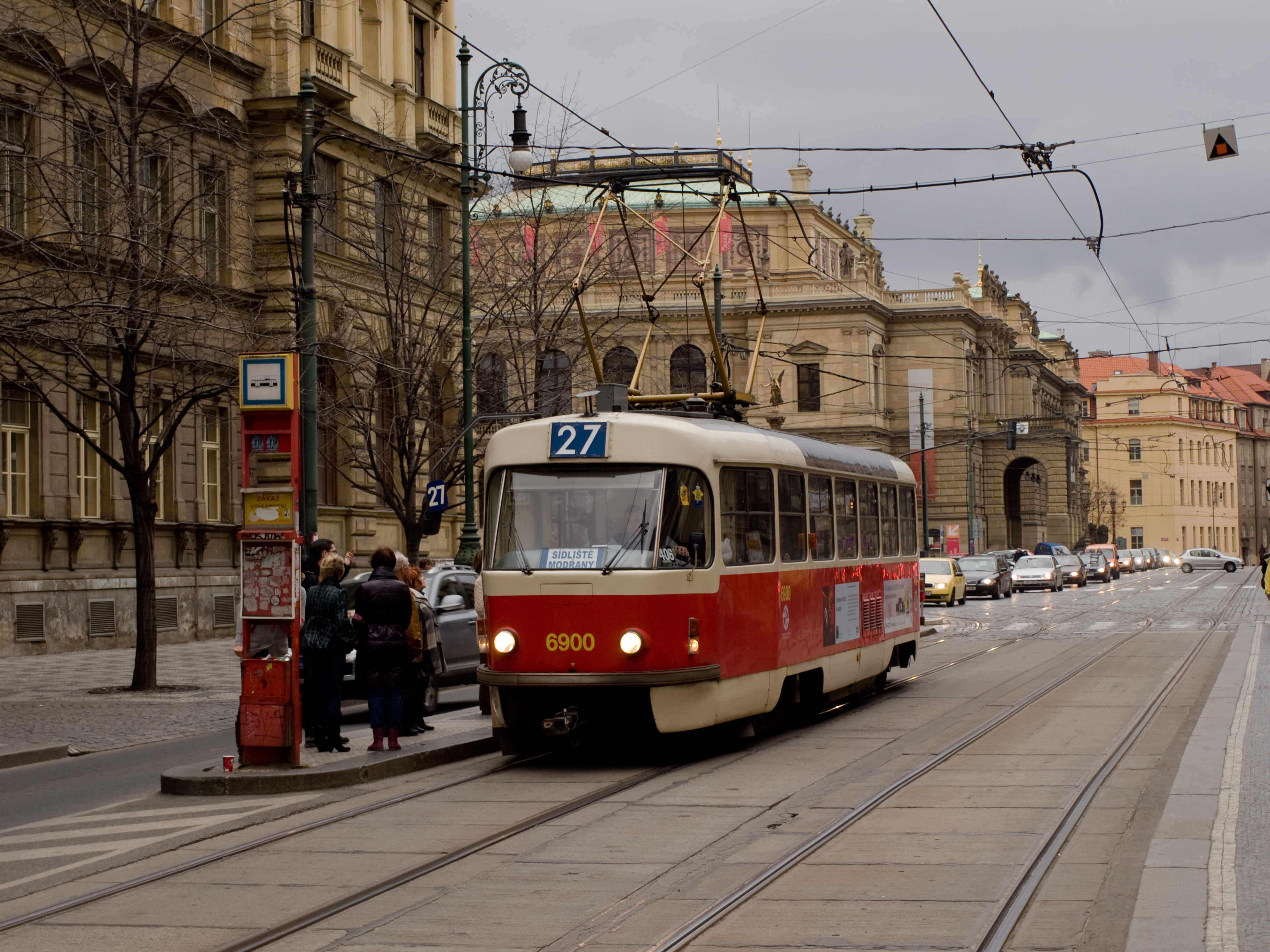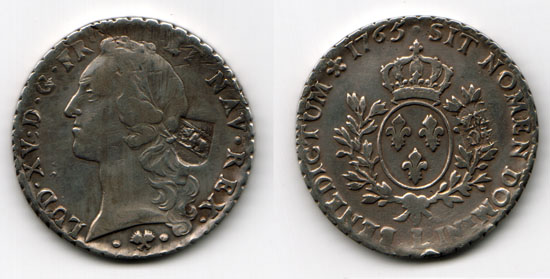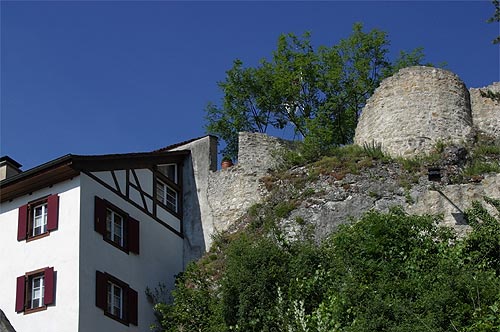|
10 Line (BLT)
BLT's tram line 10 is an international tramway line in Europe which is in length. The line in the region of Basel, Switzerland, is operated by Baselland Transport (BLT). The Basel–Dornach railway line opened in 1902 when it terminated at in Basel as part of the Birseckbahn (BEB). It was extended to Rodersdorf when BLT took control of the former Birsigtalbahn (BTB) 17 line from Rodersdorf (Canton of Solothurn) to Heuwaage in 1986. In 2001, both the 10 and 11 lines were redirected via Basel SBB, when BLT completed an extension from Münchensteinerstrasse to Basel SBB. The line 10 is Basel's only direct tram line between the train station SBB and the main entrance to the Zoo Basel. It also has the almost-unique distinction of crossing an international border, as it passes through French territory for two miles and calls at the commune of Leymen in Alsace. There are just four other known international tram lines: Saarbrücken's Saarbahn from Germany to France (Sarregue ... [...More Info...] [...Related Items...] OR: [Wikipedia] [Google] [Baidu] |
Tram
A tram (called a streetcar or trolley in North America) is a rail vehicle that travels on tramway tracks on public urban streets; some include segments on segregated right-of-way. The tramlines or networks operated as public transport are called tramways or simply trams/streetcars. Many recently built tramways use the contemporary term light rail. The vehicles are called streetcars or trolleys (not to be confused with trolleybus) in North America and trams or tramcars elsewhere. The first two terms are often used interchangeably in the United States, with ''trolley'' being the preferred term in the eastern US and ''streetcar'' in the western US. ''Streetcar'' or ''tramway'' are preferred in Canada. In parts of the United States, internally powered buses made to resemble a streetcar are often referred to as "trolleys". To avoid further confusion with trolley buses, the American Public Transportation Association (APTA) refers to them as " trolley-replica buses". In the ... [...More Info...] [...Related Items...] OR: [Wikipedia] [Google] [Baidu] |
Sarreguemines
Sarreguemines (; German: ''Saargemünd'' , Lorraine Franconian: ''Saargemìnn'') is a commune in the Moselle department of the Grand Est administrative region in north-eastern France. It is the seat of an arrondissement and a canton. As of the 2013 France census, the town's population is 21,572. The inhabitants of the commune are known as ''Sarregueminois'' and ''Sarregueminoises''. Geography Sarreguemines, whose name is a French spelling of the name in local Lorraine-German dialect ''"Saargemin"'', meaning "confluence into the Saar", is located at the confluence of the Blies and the Saar, east of Metz, northwest of Strasbourg by rail, and at the junction of the lines to Trier and Sarrebourg. Sarreguemines station has rail connections to Strasbourg, Saarbrücken and Metz. Traditionally Sarreguemines was the head of river navigation on the Saar, its importance being a depot where boats were unloaded. Population Administration Sarreguemines was, from 1985 to 2015, the seat ... [...More Info...] [...Related Items...] OR: [Wikipedia] [Google] [Baidu] |
Transport In Basel-Landschaft
Transport (in British English), or transportation (in American English), is the intentional movement of humans, animals, and goods from one location to another. Modes of transport include air, land ( rail and road), water, cable, pipeline, and space. The field can be divided into infrastructure, vehicles, and operations. Transport enables human trade, which is essential for the development of civilizations. Transport infrastructure consists of both fixed installations, including roads, railways, airways, waterways, canals, and pipelines, and terminals such as airports, railway stations, bus stations, warehouses, trucking terminals, refueling depots (including fueling docks and fuel stations), and seaports. Terminals may be used both for interchange of passengers and cargo and for maintenance. Means of transport are any of the different kinds of transport facilities used to carry people or cargo. They may include vehicles, riding animals, and pack a ... [...More Info...] [...Related Items...] OR: [Wikipedia] [Google] [Baidu] |
Transport In Basel-Stadt
Transport (in British English), or transportation (in American English), is the intentional movement of humans, animals, and goods from one location to another. Modes of transport include air, land (rail and road), water, cable, pipeline, and space. The field can be divided into infrastructure, vehicles, and operations. Transport enables human trade, which is essential for the development of civilizations. Transport infrastructure consists of both fixed installations, including roads, railways, airways, waterways, canals, and pipelines, and terminals such as airports, railway stations, bus stations, warehouses, trucking terminals, refueling depots (including fueling docks and fuel stations), and seaports. Terminals may be used both for interchange of passengers and cargo and for maintenance. Means of transport are any of the different kinds of transport facilities used to carry people or cargo. They may include vehicles, riding animals, and pack animals. Vehicles may inc ... [...More Info...] [...Related Items...] OR: [Wikipedia] [Google] [Baidu] |
Transport In Basel
, french: link=no, Bâlois(e), it, Basilese , neighboring_municipalities= Allschwil (BL), Hégenheim (FR-68), Binningen (BL), Birsfelden (BL), Bottmingen (BL), Huningue (FR-68), Münchenstein (BL), Muttenz (BL), Reinach (BL), Riehen (BS), Saint-Louis (FR-68), Weil am Rhein (DE-BW) , twintowns = Shanghai, Miami Beach , website = www.bs.ch Basel ( , ), also known as Basle ( ),french: Bâle ; it, Basilea ; rm, label=Sutsilvan, Basileia; other rm, Basilea . is a city in northwestern Switzerland on the river Rhine. Basel is Switzerland's third-most-populous city (after Zürich and Geneva) with about 175,000 inhabitants. The official language of Basel is (the Swiss variety of Standard) German, but the main spoken language is the local Basel German dialect. Basel is commonly considered to be the cultural capital of Switzerland and the city is famous for its many museums, including the Kunstmuseum, which is the first collection of art accessible ... [...More Info...] [...Related Items...] OR: [Wikipedia] [Google] [Baidu] |
Tram Routes In Basel
A tram (called a streetcar or trolley in North America) is a rail vehicle that travels on tramway tracks on public urban streets; some include segments on segregated right-of-way. The tramlines or networks operated as public transport are called tramways or simply trams/streetcars. Many recently built tramways use the contemporary term light rail. The vehicles are called streetcars or trolleys (not to be confused with trolleybus) in North America and trams or tramcars elsewhere. The first two terms are often used interchangeably in the United States, with ''trolley'' being the preferred term in the eastern US and ''streetcar'' in the western US. ''Streetcar'' or ''tramway'' are preferred in Canada. In parts of the United States, internally powered buses made to resemble a streetcar are often referred to as "trolleys". To avoid further confusion with trolley buses, the American Public Transportation Association (APTA) refers to them as "trolley-replica buses". In the United ... [...More Info...] [...Related Items...] OR: [Wikipedia] [Google] [Baidu] |
Swiss Franc
The Swiss franc is the currency and legal tender of Switzerland and Liechtenstein. It is also legal tender in the Italian exclave of Campione d'Italia which is surrounded by Swiss territory. The Swiss National Bank (SNB) issues banknotes and the federal mint Swissmint issues coins. In its polyglot environment, it is often simply referred as german: Franken, french: franc, it, franco and rm, franc. It is also designated through signes: ''Fr'' Some fonts render the currency sign character "₣" (unicodebr>U+20A3 as ligatured Fr, following the German language convention for the Swiss Franc. However, most fonts render the character as F with a strikethrough on the lower left, which is the unofficial sign of French Franc. (in German language), ''fr.'' (in French, Italian, Romansh languages), as well as in any other language, or internationally as ''CHF'' which stands for ''.'' This acronym also serves as eponymous ISO 4217 code of the currency, CHF being used by banks and f ... [...More Info...] [...Related Items...] OR: [Wikipedia] [Google] [Baidu] |
Münchenstein
Münchenstein (Swiss German: ''Minggestai'') is a municipality in the district of Arlesheim in the canton of Basel-Landschaft in Switzerland. Historical records Münchenstein is first mentioned in 1196 as ''Kekingen''. In 1270, it was mentioned as ''Geckingen'' and in 1279 as ''Munchenstein''. * 1259: The hamlet and the mill, between "Neue Welt" and St. Jakob, are mentioned in a deed as being owned by the Basel Dompropstei (Provost's Church). * 1270: The village is named in the Bishop of Basel diocese certificate as Geckingen. * 1295: The mention of the name in the current form "Munchenstein", which means the "rock of the castle of the Münchs". The first part of the name refers to the builders of the castle, and the second part means stone and refers to the foundations of the castle. * 1324: The Münchs were not able keep the village and castle for long as their own Property, they had to hand over ownership to the Graf von Pfirt, who then lent it to the Münchs in fief. Foll ... [...More Info...] [...Related Items...] OR: [Wikipedia] [Google] [Baidu] |
Dornach
: ''Dornach is also a quarter of the French city of Mulhouse and the Scots name for Dornoch in the Scottish Highlands, and Dòrnach is the Gaelic name for Dornoch in the Scottish Highlands.'' Dornach ( Swiss German: ''Dornech'') is a municipality in the district of Dorneck in the canton of Solothurn in Switzerland. History Dornach is first mentioned in 1223 as ''de Tornacho''. In 1307 it was mentioned as ''zu Dornach''. It has been settled since at least 1223 when a local lay priest was known as Johannes de Tornacho (thought to mean "from the estate of Turnus"). The site was the location of the decisive 1499 Battle of Dornach, which ended the Swabian War and effectively ensured the independence of the Old Swiss Confederacy from the Holy Roman Empire. The battle is memorialized in a 1949 relief wall. Today Dornach is famous for the Goetheanum and is home to the international headquarters of the Anthroposophical movement founded by Rudolf Steiner. Geography Dornach has ... [...More Info...] [...Related Items...] OR: [Wikipedia] [Google] [Baidu] |
Weil Am Rhein
Weil am Rhein (High Alemannic: ''Wiil am Rhii'') is a German town and commune. It is on the east bank of the River Rhine, and extends to the point at which the Swiss, French and German borders meet. It is the most southwesterly town in Germany and a suburb of the Swiss city Basel. Weil am Rhein is part of the "trinationale Agglomeration Basel" with about 830,000 inhabitants. Geography Weil am Rhein is located at in the district of Lörrach in the Federal State of Baden-Württemberg. The city limits border France to the west and Switzerland to the south including the triple border of the three countries. Locally, Weil is situated in the region referred to as Markgräflerland. The city's location on the Rhine and proximity to the Black Forest give it a continental climate, particularly suited to viticulture. Karte Weil am Rhein.png, Map of Weil am Rhein History The town is first documented in the year 786 as ''Willa'', a name which is thought to be of Roman origin. The duc ... [...More Info...] [...Related Items...] OR: [Wikipedia] [Google] [Baidu] |
Trams In Basel
The Basel tramway network (german: Basler Strassenbahn-Netz) is a network of tramways forming part of the public transport system in Basel, Switzerland, and its agglomeration - it also reaches into adjacent suburbs in Germany and France. The only two other tramway networks to cross an international border are Geneva's and Strasbourg's tramways. The Basel tram system consists of 12 lines. Due to its longevity (the network is now more than a century old), it is part of Basel's heritage and, alongside the Basel Minster, is one of the symbols of the city. The trams on the network are operated by two transport providers: Basler Verkehrs-Betriebe (Basel Transport Service) (BVB) and Baselland Transport (BLT). Both operators are part of the integrated fare network Tarifverbund Nordwestschweiz (TNW), which in itself is part of the three countries-integrated fare network triregio. BVB is owned by, and operates in, Basel-Stadt, the small canton comprising the city of Basel and two sma ... [...More Info...] [...Related Items...] OR: [Wikipedia] [Google] [Baidu] |
Kehl
Kehl (; gsw, label= Low Alemannic, Kaal) is a town in southwestern Germany in the Ortenaukreis, Baden-Württemberg. It is on the river Rhine, directly opposite the French city of Strasbourg, with which it shares some municipal servicesfor example the Strasbourg tramway, which now reaches Kehl. History The village of Kehl was first mentioned in 1038. In 1338 the first permanent bridge between Kehl and Strasbourg was completed. In 1678 the city was taken over by France, as it was considered to be part of the defence system of Strasbourg. Hence the village was transformed into a fortress in 1683 by the French architect Vauban. In 1681, the Imperial City of Strasbourg, a territory of the Holy Roman Empire that included Kehl, was annexed by Louis XIV, King of France. This annexation was recognised by the Treaty of Ryswick in 1697, but all right-bank territories were restored to the Empire, leading to Kehl's cession to the Margraviate of Baden the following year. On May 7, 1770, ... [...More Info...] [...Related Items...] OR: [Wikipedia] [Google] [Baidu] |








